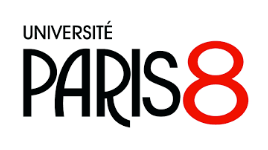12h00
Salle 159
Soonja Choi (Vienne & San Diego State University)
Figure and Ground in motion events: Evidence from German and Korean
Comparing between German and Korean speakers, we investigate variations in linguistic description and nonlinguistic behaviors (eye-gaze and memory) for motion events. In motion events (e.g., putting a cup on the table), the moving object (e.g., cup) is the Figure and the reference object (e.g., table) is the Ground. The two elements have distinct perceptual properties and assume conceptually asymmetric roles: Figure(F) is the entity moving along a trajectory (e.g., onto, into) whereas Ground(G) is the non-moving reference frame. We investigate (i) the degrees to which German and Korean speakers differentiate between F and G semantically (spatial terms) and syntactically (grammatical roles: subject, object) and (ii) their eye-gaze and memory patterns of F and G.
In the linguistic study, participants described dynamic video events involving two objects that systematically switched their F-G roles (e.g., put cup(F) on table(G) and put table(F) under cup(G)). German speakers used distinct spatial terms (e.g., auf ‘on’, unter ‘under’) for opposing F-G relations, thus encoding the F-G asymmetry much more than Korean speakers did. Conversely, Korean speakers frequently used the same terms (e.g., kkita ‘fit.tightly’) and the same syntactic constructions regardless of the switches in F-G roles. These crosslinguistic differences are more evident for Non-typical events (put table under cup) than for Typical events (put cup on table), showing that linguistic encoding interacts with speakers’ familiarity of motion events in everyday experiences. The differences also reflect language-specific spatial semantics and language-specific viewpoints of the Figure-Ground relation.
German and Korean speakers also differed in nonlinguistic behaviors: German speakers looked longer at the Figure particularly in Non-typical events (compared to Typical events), but Korean speakers showed no such difference. In the memory test, German speakers were better than Korean speakers in remembering which object moved, i.e., the Figure. We relate these nonlinguistic differences between German and Korean speakers to their differences in linguistic representation of Figure and Ground.
References:
Talmy, L. (1978). Figure and ground in complex sentences. In J. Greenberg, C. Ferguson, & E. Moravcsik (Eds.), Universals of human language (pp. 627–649). Stanford, CA: Stanford University Press.
Talmy, L. (1985). Lexicalization patterns: Semantic structure in lexical forms. In T. Shopin (Ed.), Language typology and syntactic description, Vol. III: Grammatical categories and the lexicon (pp. 57–149). Cambridge, MA: Cambridge University Press.
Thiering, M. (2015). Spatial semiotics and spatial mental models: Figure-Ground asymmetries in languages. (Applications of Cognitive Linguistics). Berlin, Germany: Mouton de Gruyter.



